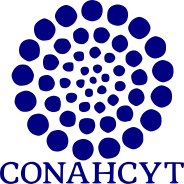ADAPTIVE CO-MANAGEMENT OF URBAN FORESTS: MONITORING REFORESTATION PROGRAMS IN MEXICO CITY.
Palabras clave:
Urban Reforestation, Environmental Management, Participatory Governance, Urban Forests.Resumen
Aiming to maintain or increase the indispensable socio-ecological benefits provided by urban forests, cities of the world have adequate urban forestry to take advantage of new technologies and political arrangements. Cooperation among different actors has become a trend to address urban forests’ most pressing management issues, such as reforestation monitoring and the creation of tree inventories. This management approach has been conceptualized as adaptive co-management (ACM) in European and North American cities. Intending to advance the academic efforts to understand ACM, this article presents a spatial and statistical analysis of the distribution of trees monitored in Mexico City. The analysis indicated that the number of urban trees monitored is very low and inequitably distributed in the city. The implementation of ACM for environmental management of the urban forest, using the participatory tool of Naturalista. The tool demonstrated to have much potential in the operationalization of inclusive reforestation programs, particularly in monitoring urban trees recently planted. The implementation of ACM and citizens' science programs are discussed and recommended as a promising urban environmental management approach.
Referencias
Bibliography
Armitage, D. R., Plummer, R., Berkes, F., Arthur, R. I., Charles, A. T., Davidson-Hunt, I. J., … Marschke, M. (2009). Adaptive co-management for social–ecological complexity. Frontiers in Ecology and the Environment, 7(2), 95–102. https://doi.org/10.1890/070089
Baird, J., Plummer, R., & Bodin, Ö. (2016). Collaborative governance for climate change adaptation in Canada: Experimenting with adaptive co-management. Regional Environmental Change, 16(3), 747–758. https://doi.org/10.1007/s10113-015-0790-5
Bolin, B., Barreto, J. D., Hegmon, M., Meierotto, L., & York, A. (2013). Double Exposure in the Sunbelt: The Sociospatial Distribution of Vulnerability in Phoenix, Arizona. In C. G. Boone & M. Fragkias (Eds.), Urbanization and Sustainability (pp. 159–178). Retrieved from http://link.springer.com/chapter/10.1007/978-94-007-5666-3_10
Boone, C. G., Buckley, G. L., Grove, J. M., & Sister, C. (2009). Parks and people: An environmental justice inquiry in Baltimore, Maryland. Annals of the Association of American Geographers, 99(4), 767–787.
Caro-Borrero, A. P. (2017). Local And Scientific Ecological Knowledge Potential As A Source Of Information In A Periurban River, Mexico City, Mexico. Applied Ecology and Environmental Research, 15(1), 541–562. https://doi.org/10.15666/aeer/1501_541562
Chiesura, A. (2004). The role of urban parks for the sustainable city. Landscape and Urban Planning, 68(1), 129–138. https://doi.org/10.1016/j.landurbplan.2003.08.003
Fernández-Álvarez, R. (2017). Inequitable distribution of green public space in the Mexico City: An environmental injustice case. Economía, Sociedad y Territorio, 17(54), 399–428. https://doi.org/10.22136/est002017697
Folke, C., Carpenter, S., Elmqvist, T., Gunderson, L., Holling, C. S., & Walker, B. (2002). Resilience and sustainable development: Building adaptive capacity in a world of transformations. AMBIO: A Journal of the Human Environment, 31(5), 437–441.
Garvin, A., & Brands, R. (2011). Public parks: The key to livable communities. New York: W.W. Norton & Co.
Habitat, O. N. U. (2012). Estado de las ciudades de América Latina y el Caribe 2012. Rumbo a una nueva transición urbana. UN Habitat: Nairobi.
Hirabayashi, S., & Kroll, C. N. (2017). Single imputation method of missing air quality data for i-tree eco analyses in the conterminous united states. Retrieved January.
Konijnendijk, C. C. (2003). A decade of urban forestry in Europe. Forest Policy and Economics, 5(2), 173–186.
Konijnendijk, C. C., Ricard, R. M., Kenney, A., & Randrup, T. B. (2006). Defining urban forestry–A comparative perspective of North America and Europe. Urban Forestry & Urban Greening, 4(3–4), 93–103.
Kroeger, T., Escobedo, F. J., Hernandez, J. L., Varela, S., Delphin, S., Fisher, J. R., & Waldron, J. (2014). Reforestation as a novel abatement and compliance measure for ground-level ozone. Proceedings of the National Academy of Sciences, 111(40), E4204–E4213.
Livesley, S. J., McPherson, E. G., & Calfapietra, C. (2016). The Urban Forest and Ecosystem Services: Impacts on Urban Water, Heat, and Pollution Cycles at the Tree, Street, and City Scale. Journal of Environmental Quality, 45(1), 119–124. https://doi.org/10.2134/jeq2015.11.0567
Maldonado-Bernabé, G., Chacalo-Hilu, A., Nava-Bolaños, I., Meza-Paredes, R. M., & Zaragoza-Hernández, A. Y. (2019). Cambios en la superficie de áreas verdes de la Ciudad de México entre 1990-2015. POLIBOTANICA, 0(48). https://doi.org/10.18387/polibotanica.48.15
McPhearson, P. T., Feller, M., Felson, A., Karty, R., Lu, J. W., Palmer, M. I., & Wenskus, T. (2017). Assessing the effects of the urban forest restoration effort of MillionTreesNYC on the structure and functioning of New York City ecosystems. Urban Forests: Ecosystem Services and Management, 265.
Miller, R. W., Hauer, R. J., & Werner, L. P. (2015). Urban Forestry: Planning and Managing Urban Greenspaces , Third Edition. Waveland Press.
Nilsson, U., Luoranen, J., Kolström, T., Örlander, G., & Puttonen, P. (2010). Reforestation with planting in northern Europe. Scandinavian Journal of Forest Research, 25(4), 283–294.
Nowak, D. J., Maco, S., & Binkley, M. (2018). i-Tree: Global tools to assess tree benefits and risks to improve forest management. Arboricultural Consultant. 51 (4): 10-13., 51(4), 10–13.
Oh, K., & Jeong, S. (2007). Assessing the spatial distribution of urban parks using GIS. Landscape and Urban Planning, 82(1–2), 25–32. https://doi.org/10.1016/j.landurbplan.2007.01.014
Pace, R., Biber, P., Pretzsch, H., & Grote, R. (2018). Modeling ecosystem services for park trees: Sensitivity of i-tree eco simulations to light exposure and tree species classification. Forests, 9(2), 89.
Perino, G., Andrews, B., Kontoleon, A., & Bateman, I. (2014). The Value of Urban Green Space in Britain: A Methodological Framework for Spatially Referenced Benefit Transfer. Environmental and Resource Economics, 57(2), 251–272. https://doi.org/10.1007/s10640-013-9665-8
Perkins, H. A., Heynen, N., & Wilson, J. (2004). Inequitable access to urban reforestation: The impact of urban political economy on housing tenure and urban forests. Cities, 21(4), 291–299. https://doi.org/10.1016/j.cities.2004.04.002
Rodriguez Lopez, J. M., Heider, K., & Scheffran, J. (2017). Frontiers of urbanization: Identifying and explaining urbanization hot spots in the south of Mexico City using human and remote sensing. Applied Geography, 79, 1–10. https://doi.org/10.1016/j.apgeog.2016.12.001
Shelton, R. E., Baeza, A., Janssen, M. A., & Eakin, H. (2018). Managing household socio-hydrological risk in Mexico city: A game to communicate and validate computational modeling with stakeholders. Journal of Environmental Management, 227, 200–208. https://doi.org/10.1016/j.jenvman.2018.08.094
Sister, C., Wolch, J., & Wilson, J. (2009). Got green? Addressing environmental justice in park provision. GeoJournal, 75(3), 229–248. https://doi.org/10.1007/s10708-009-9303-8
Su, Y.-T. (2019). The roles of experts in forest-related participatory processes in Europe.
van der Jagt, A. P., Elands, B. H., Ambrose-Oji, B., GerHoházi, É., Møller, M. S., & Buizer, M. (2017). Participatory governance of urban green spaces: Trends and practices in the EU. NA, 28(3).
van der Jagt, A. P. N., Smith, M., Ambrose-Oji, B., Konijnendijk, C. C., Giannico, V., Haase, D., … Cvejić, R. (2019). Co-creating urban green infrastructure connecting people and nature: A guiding framework and approach. Journal of Environmental Management, 233, 757–767. https://doi.org/10.1016/j.jenvman.2018.09.083
Wakild, E. (2007). Naturalizing Modernity: Urban Parks, Public Gardens and Drainage Projects in Porfirian Mexico City. Mexican Studies/Estudios Mexicanos, 23(1), 101–123. https://doi.org/10.1525/msem.2007.23.1.101
Wolf, K. L., & Kruger, L. E. (2010). Urban Forestry Research Needs: A Participatory Assessment Process. Journal of Forestry, 6.
Yao, N., Konijnendijk van den Bosch, C. C., Yang, J., Devisscher, T., Wirtz, Z., Jia, L., … Ma, L. (2019). Beijing’s 50 million new urban trees: Strategic governance for large-scale urban afforestation. Urban Forestry & Urban Greening, 44, 126392. https://doi.org/10.1016/j.ufug.2019.126392
Descargas
Archivos adicionales
Publicado
Número
Sección
Licencia

Polibotánica por Departamento de Botánica de la Escuela Nacional de Ciencias Biológicas del Instituto Politécnico Nacional se distribuye bajo una Licencia Creative Commons Atribución-NoComercial-CompartirIgual 4.0 Internacional.




















